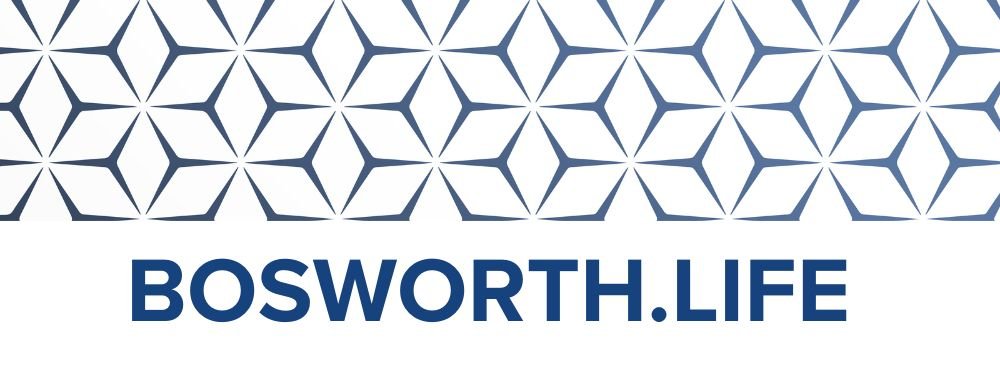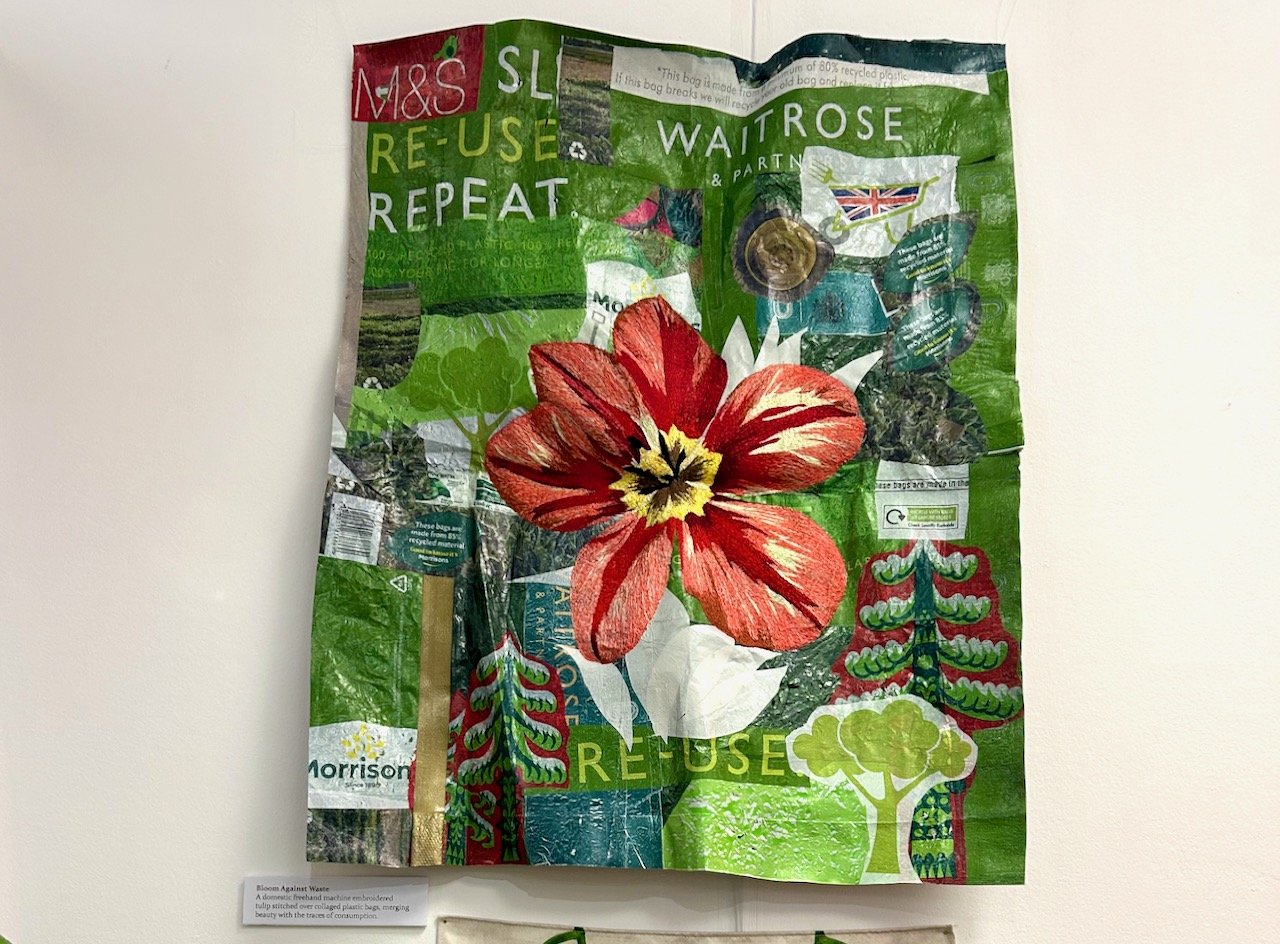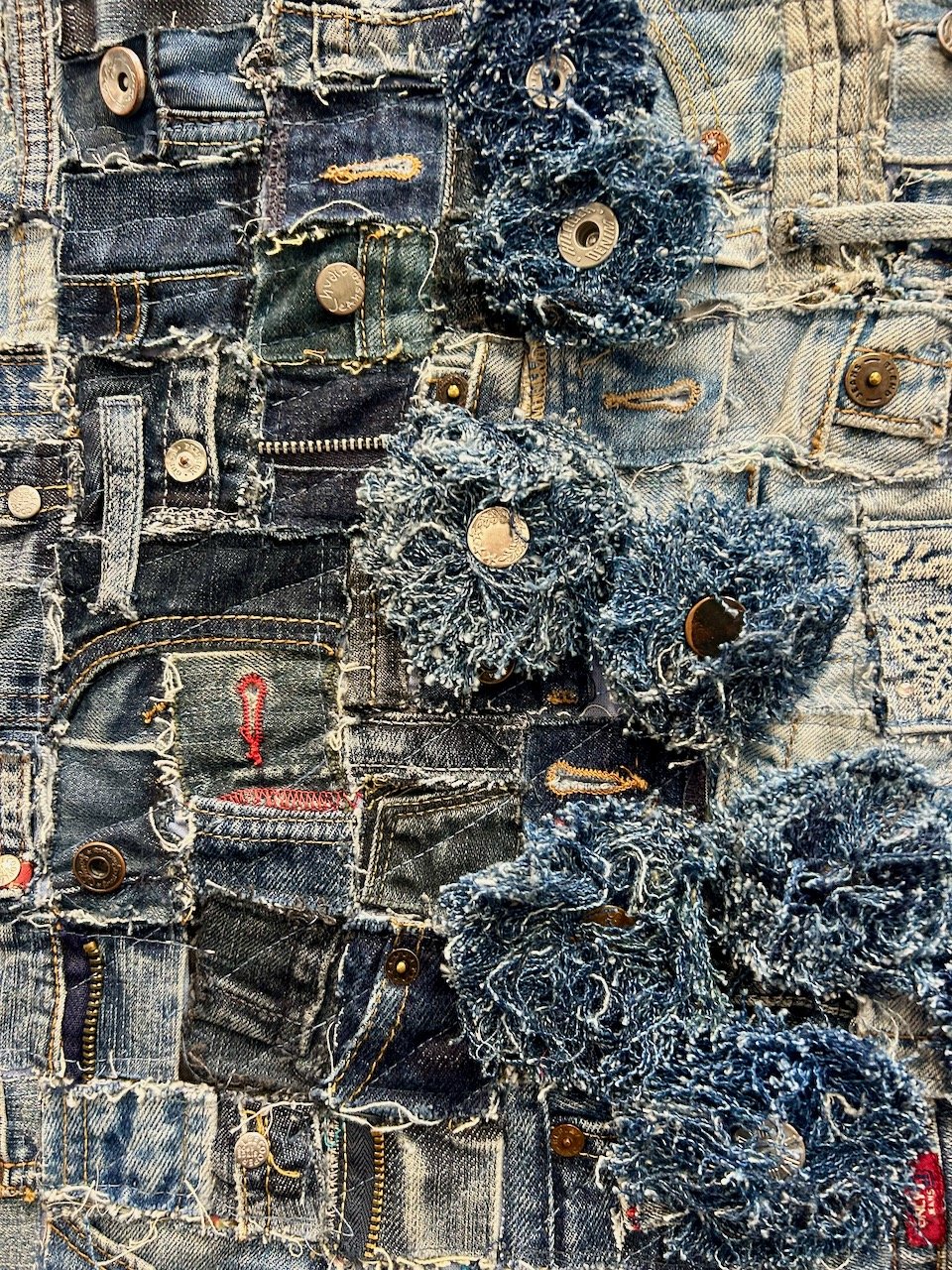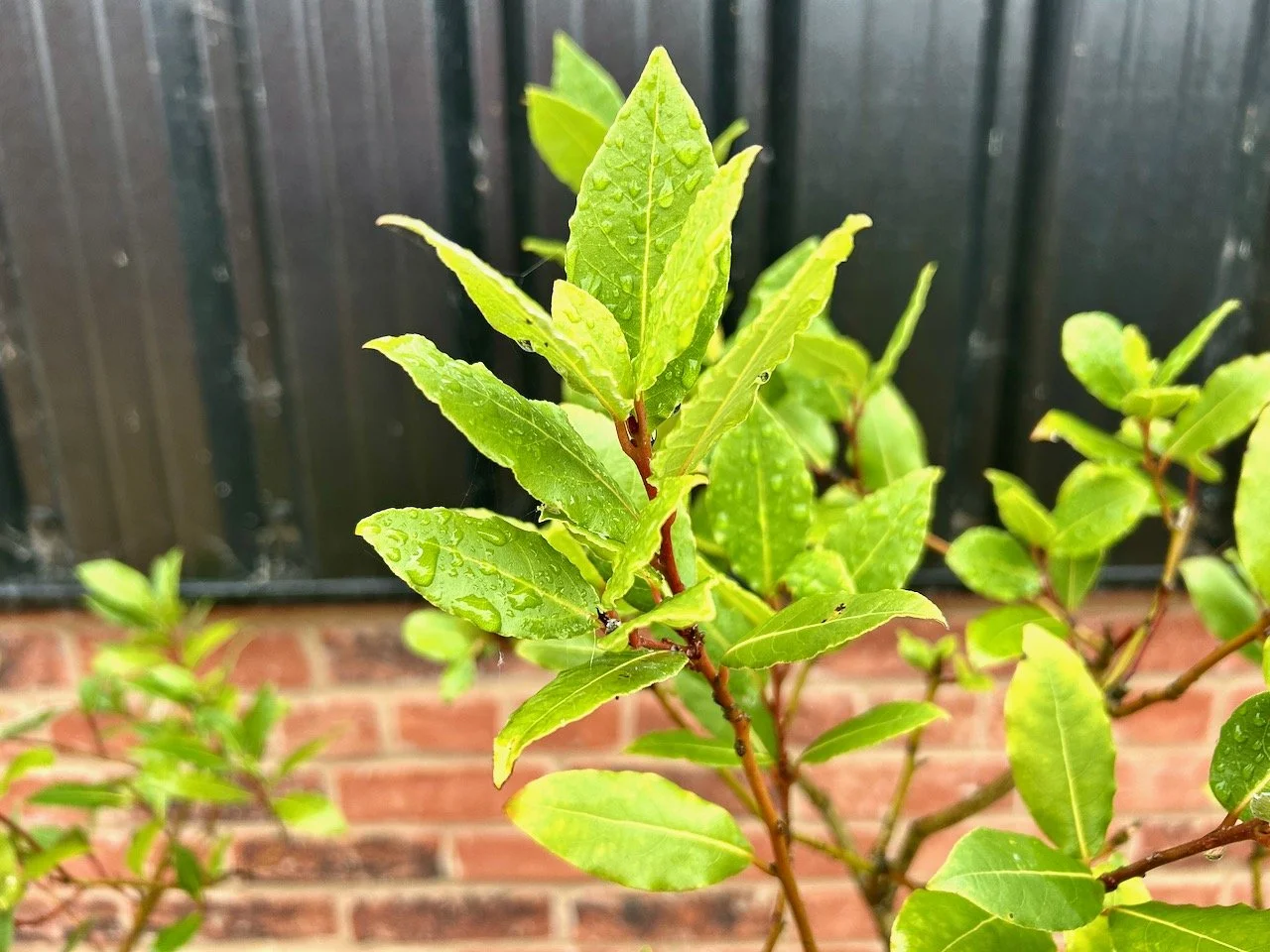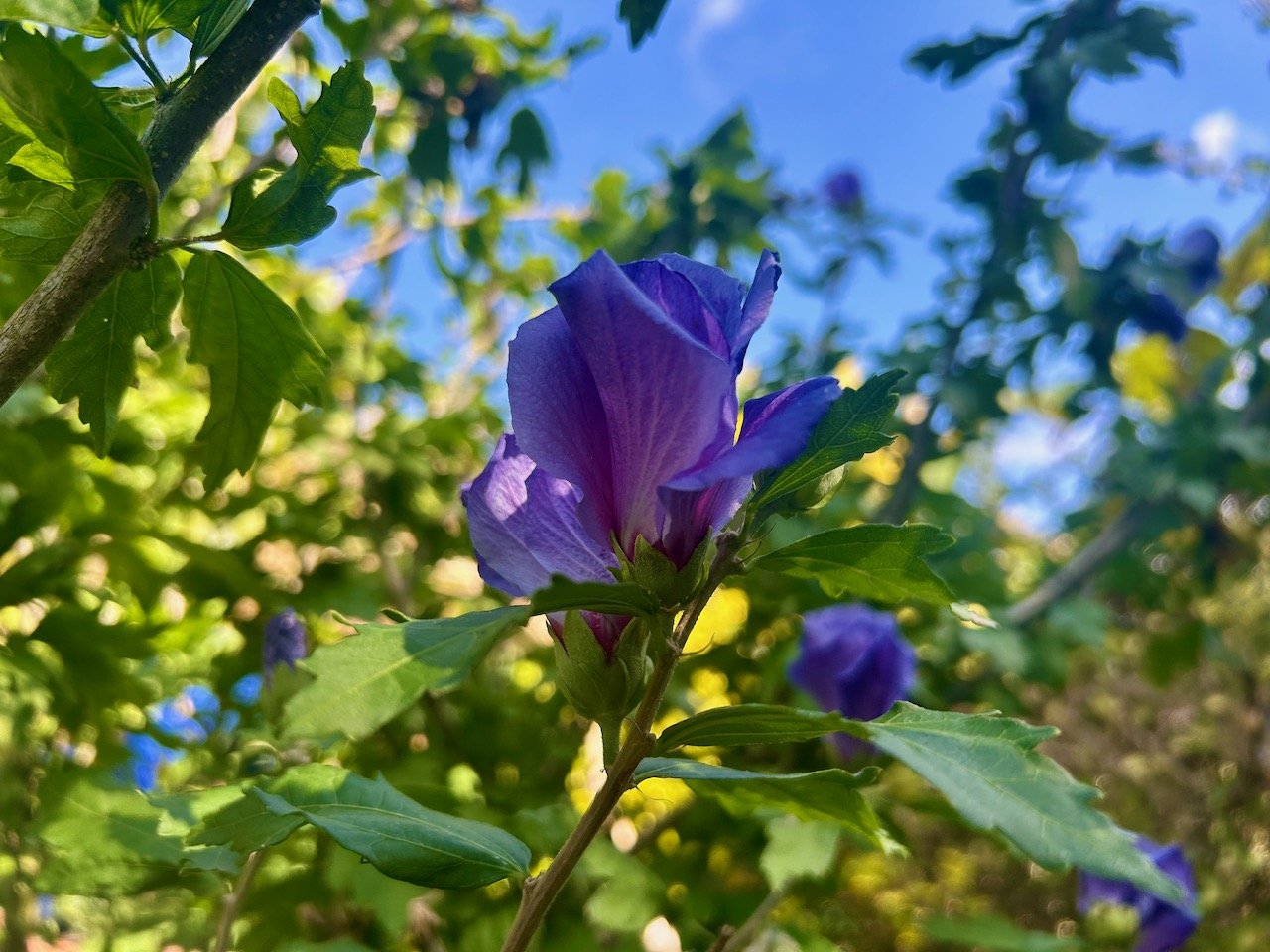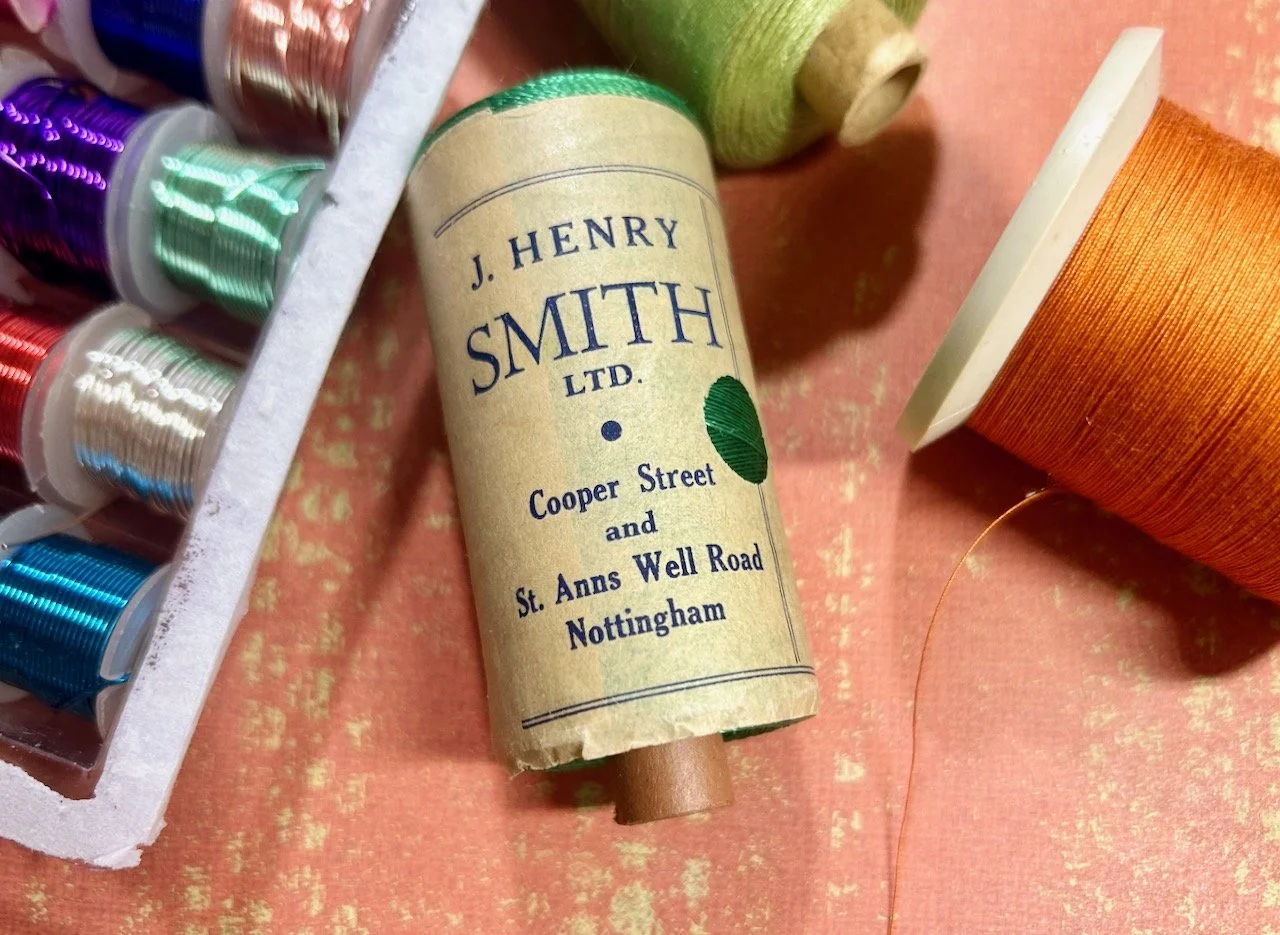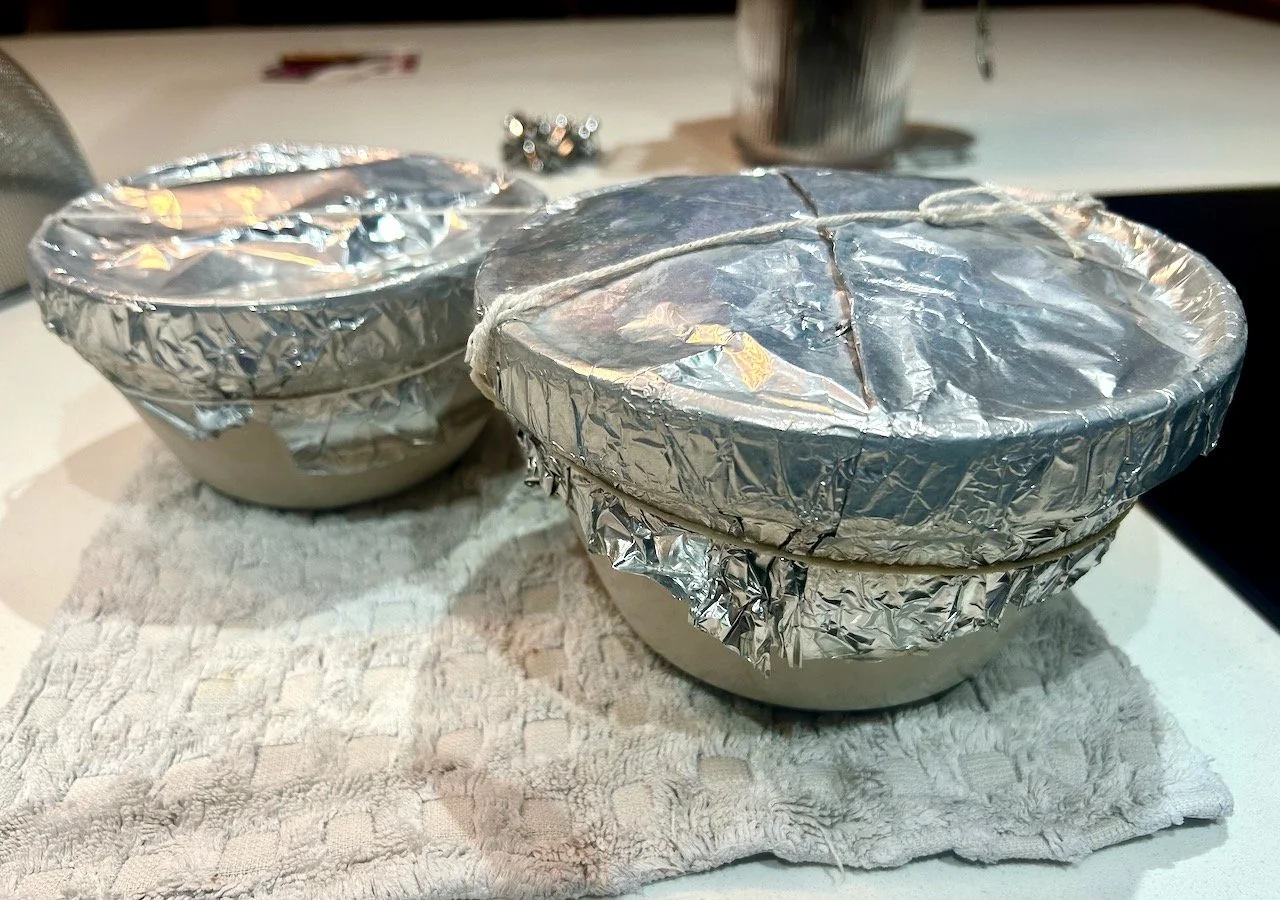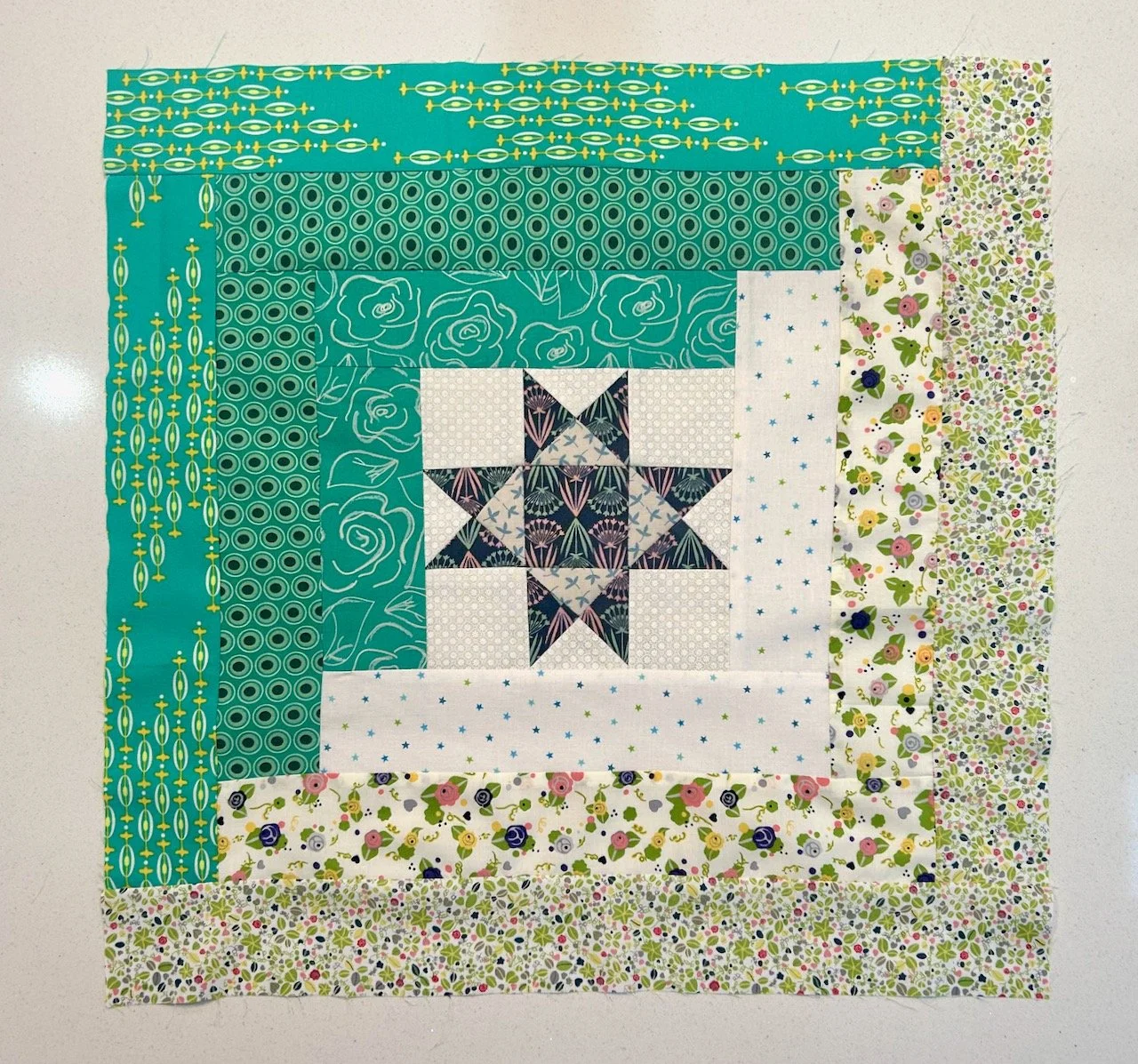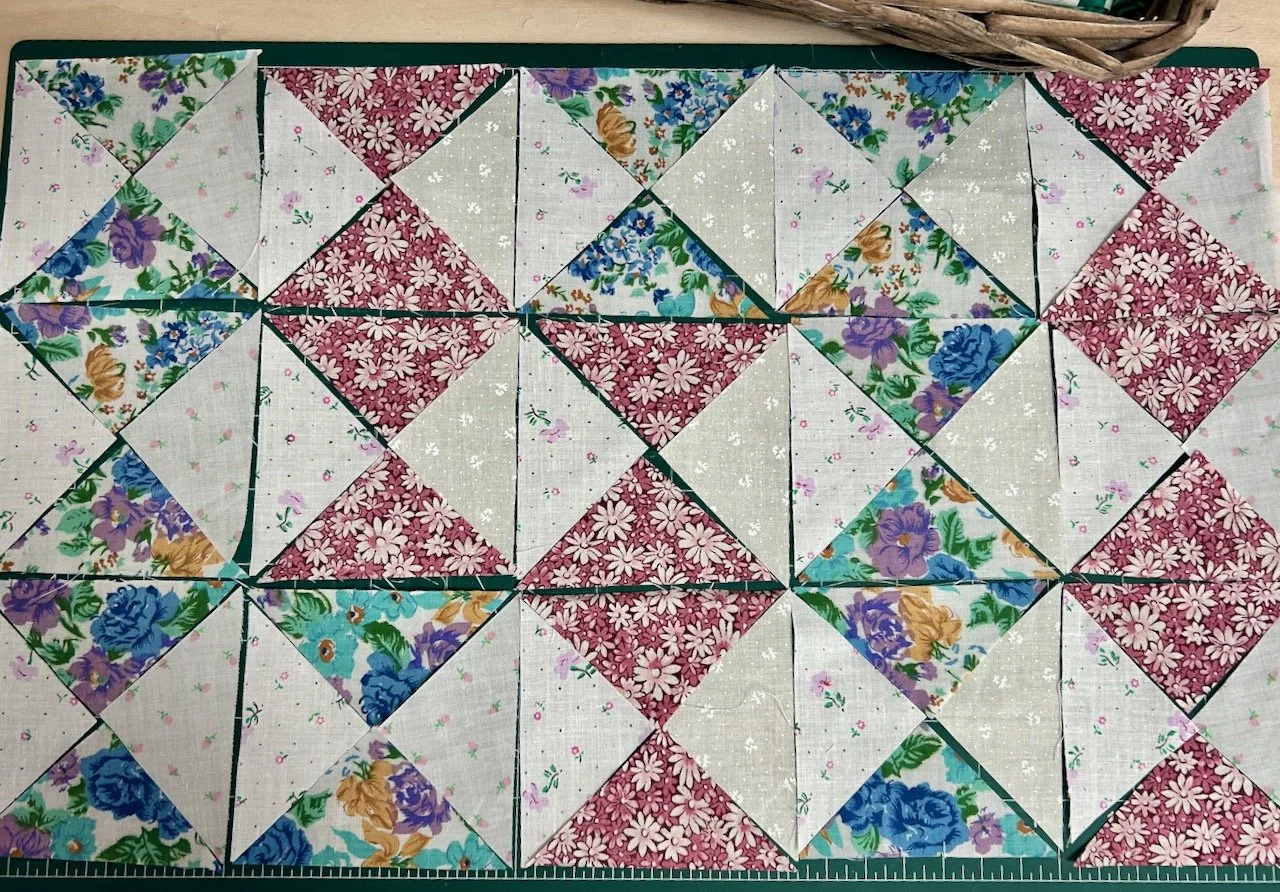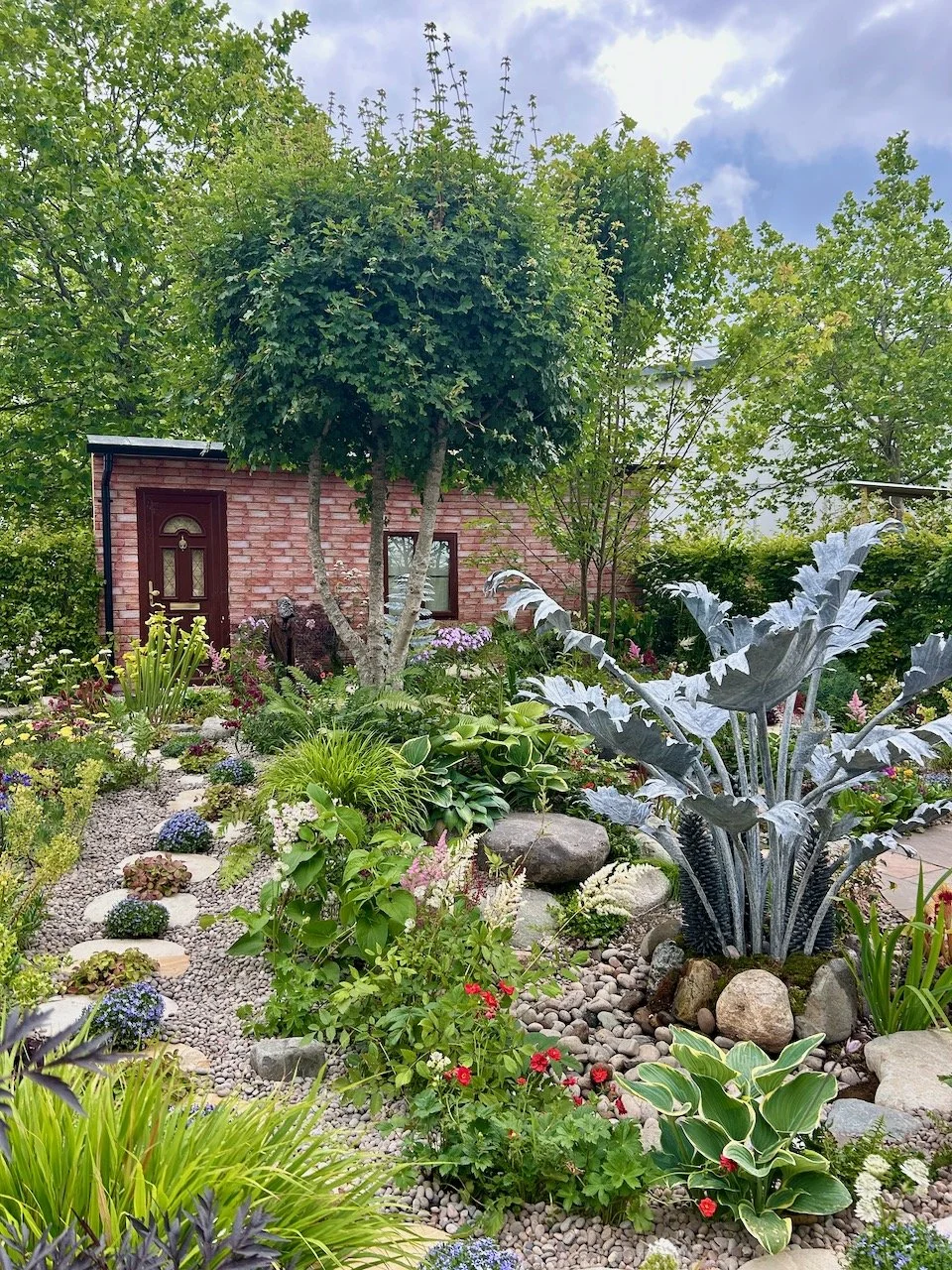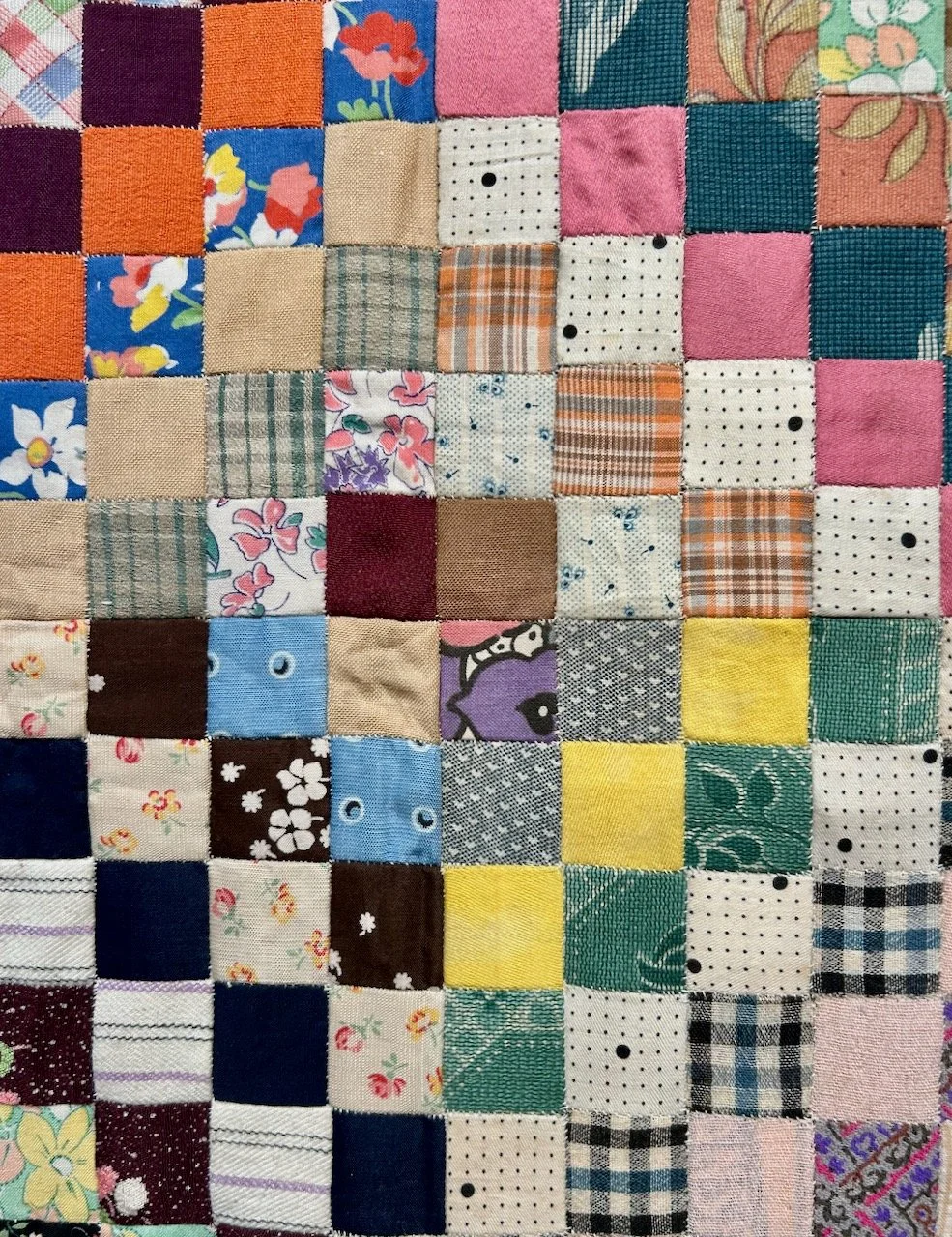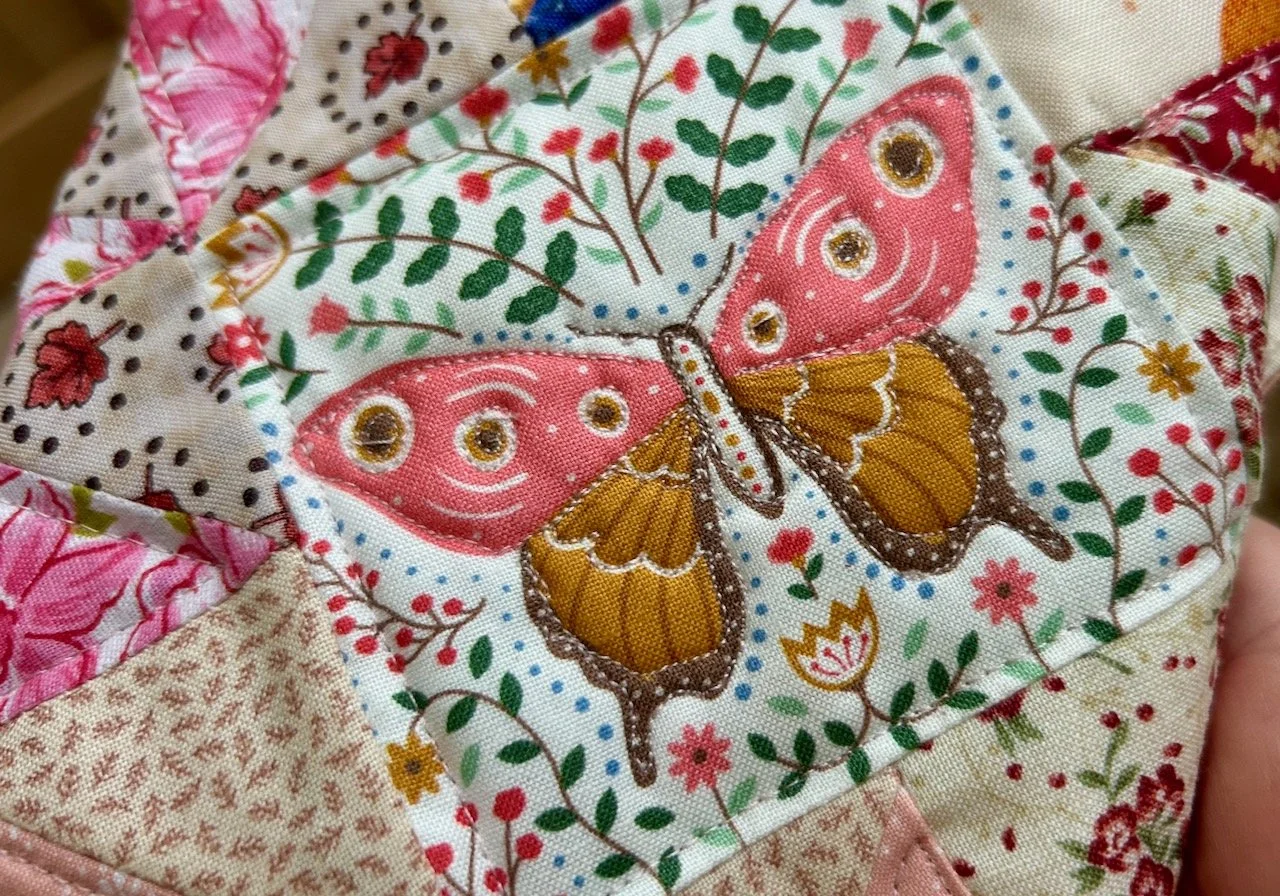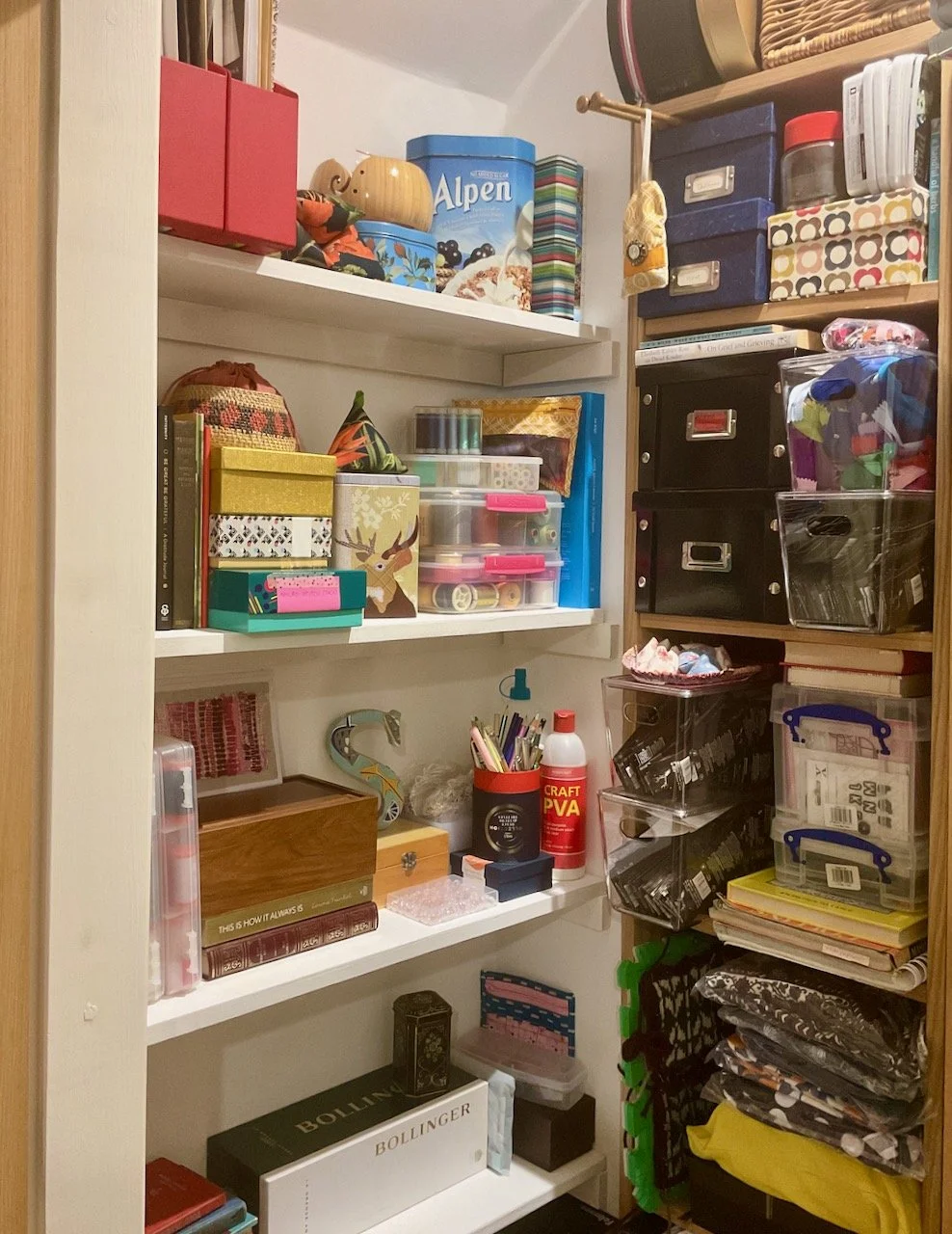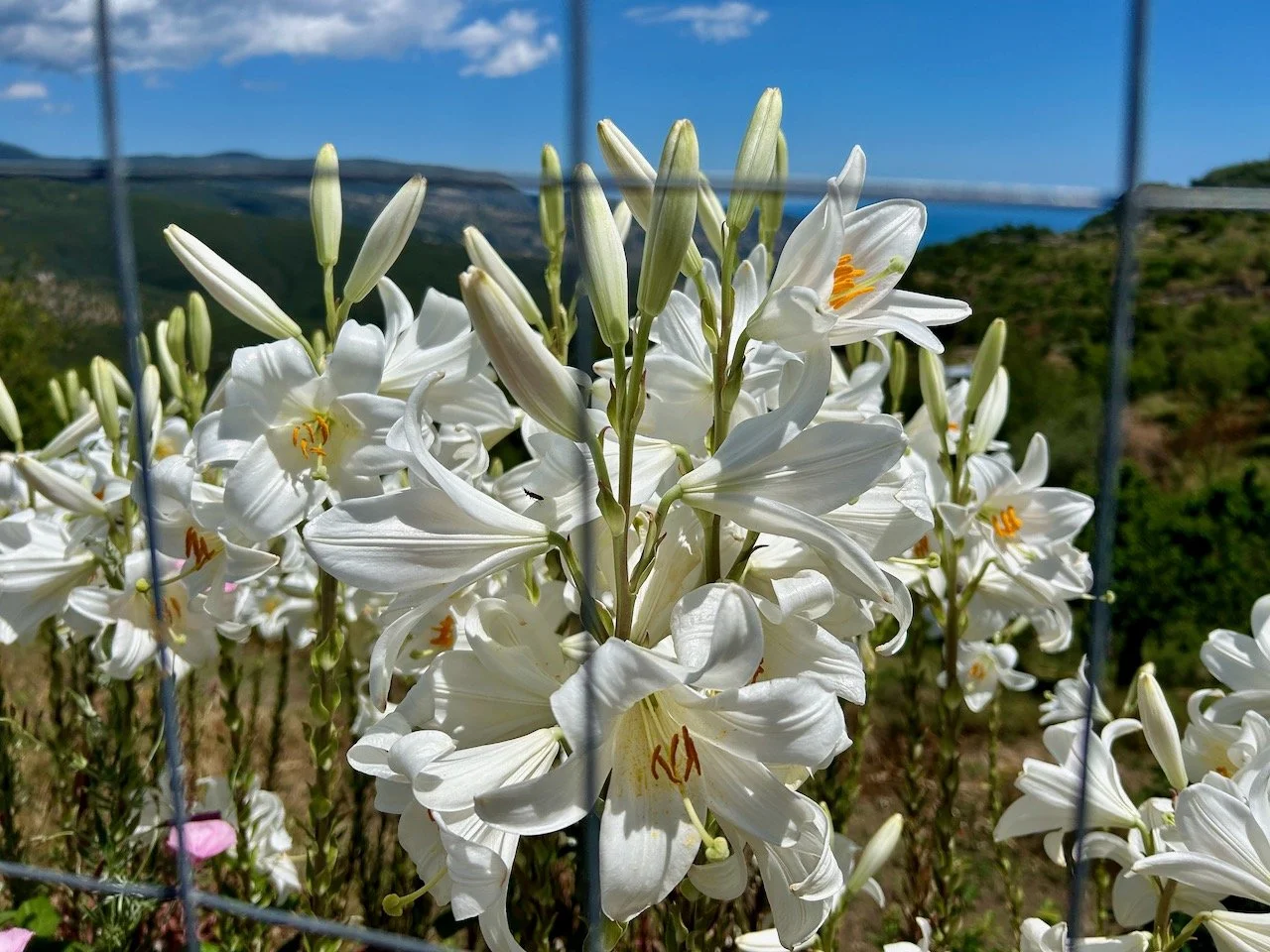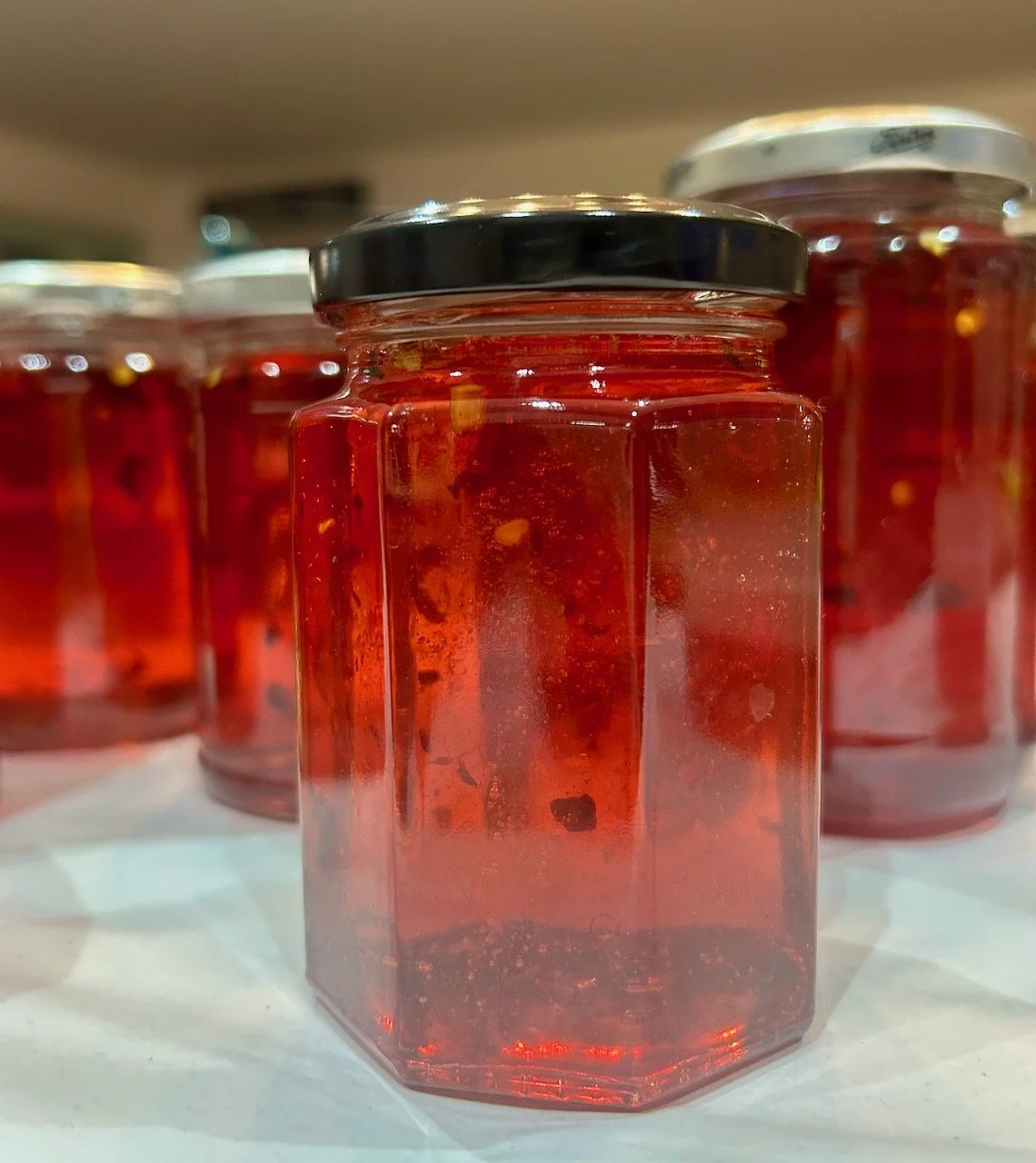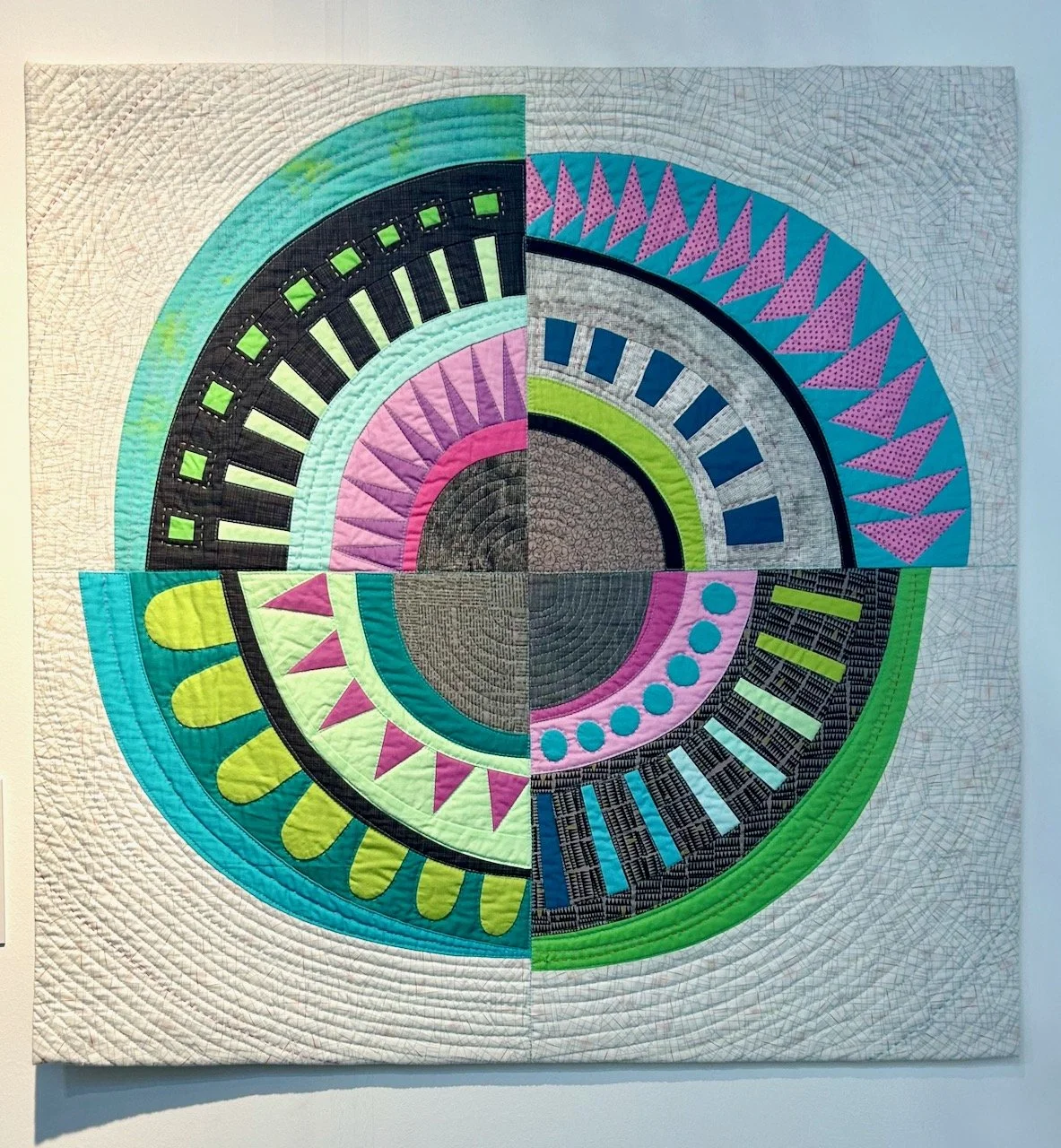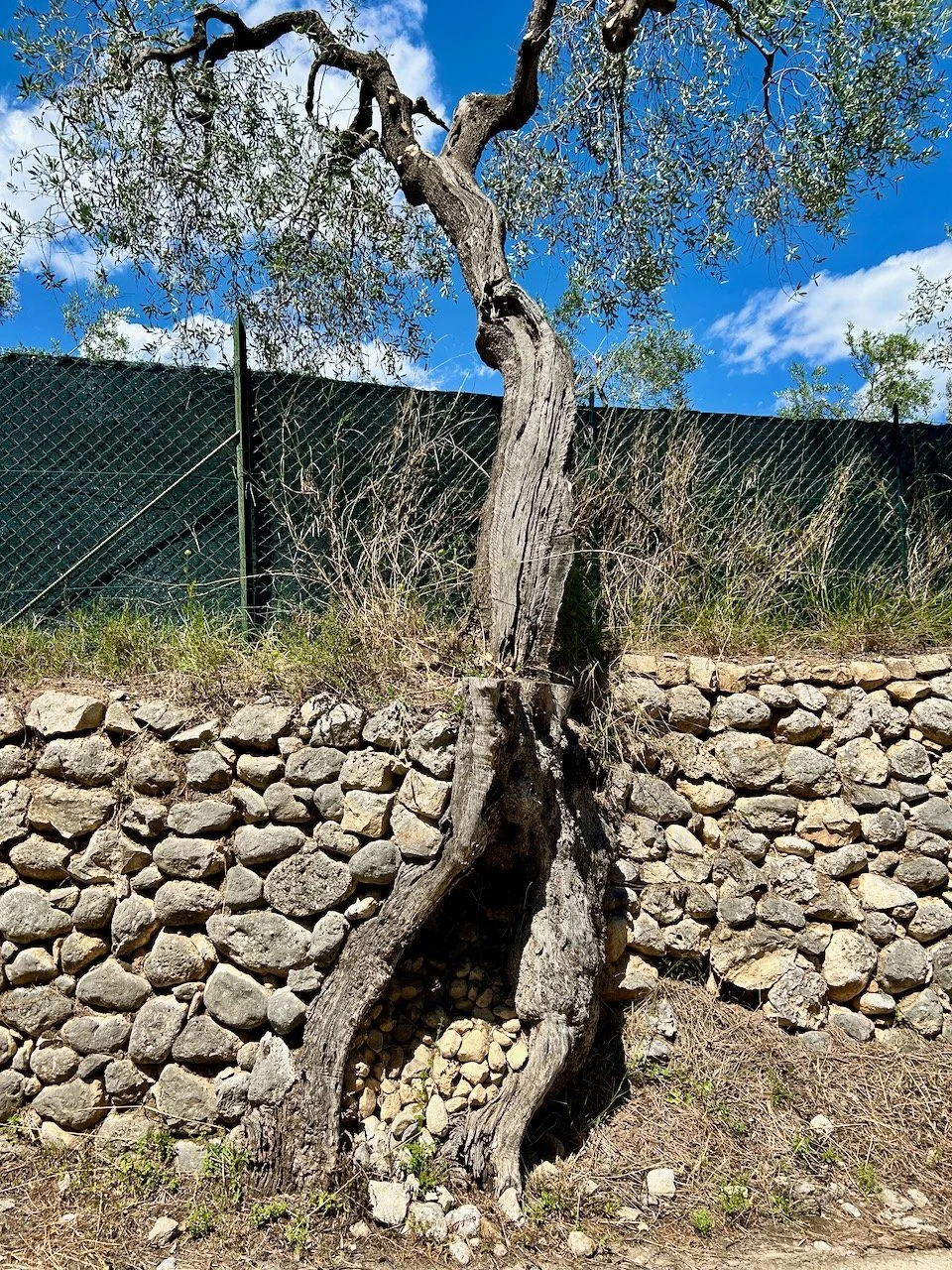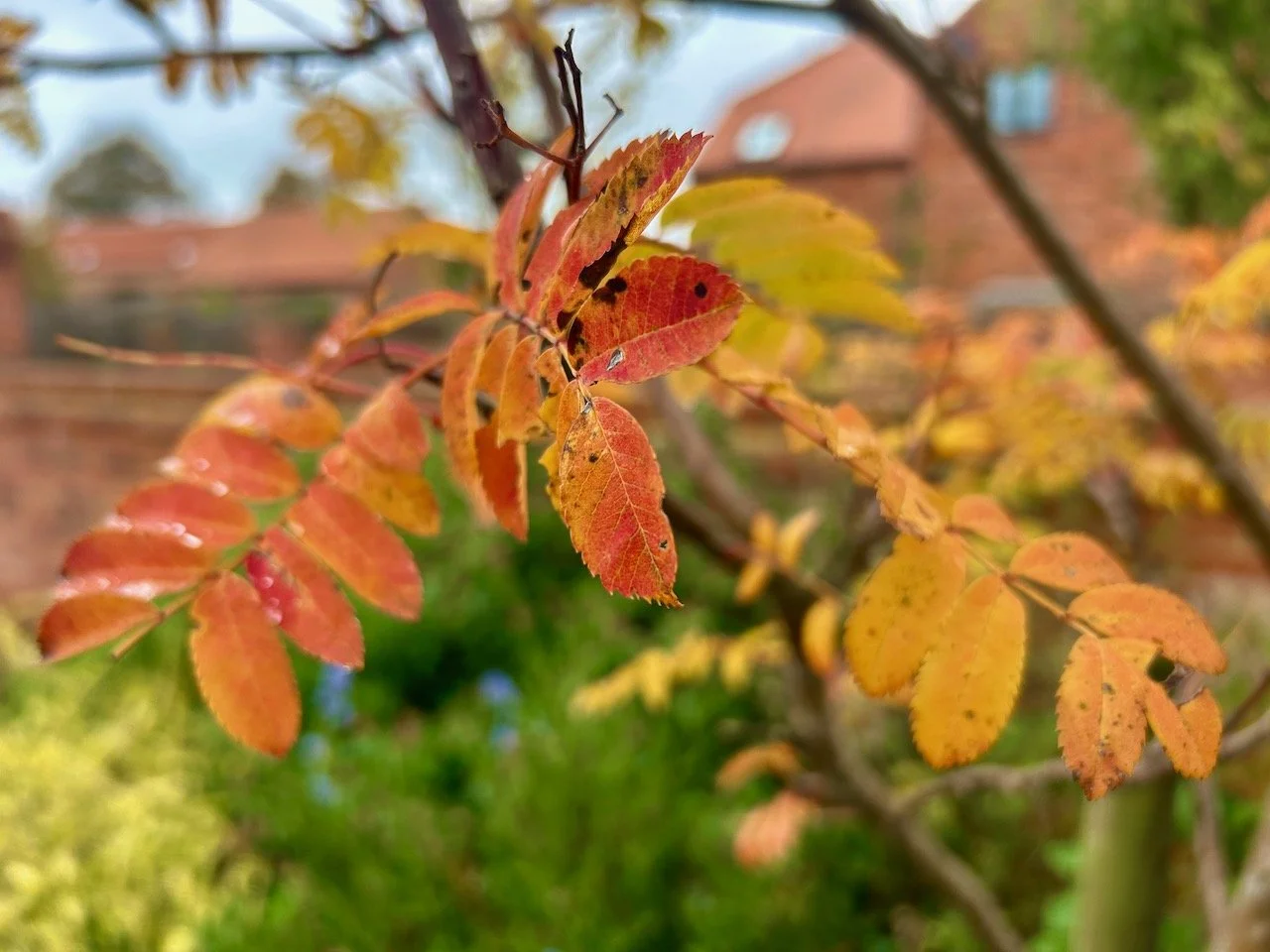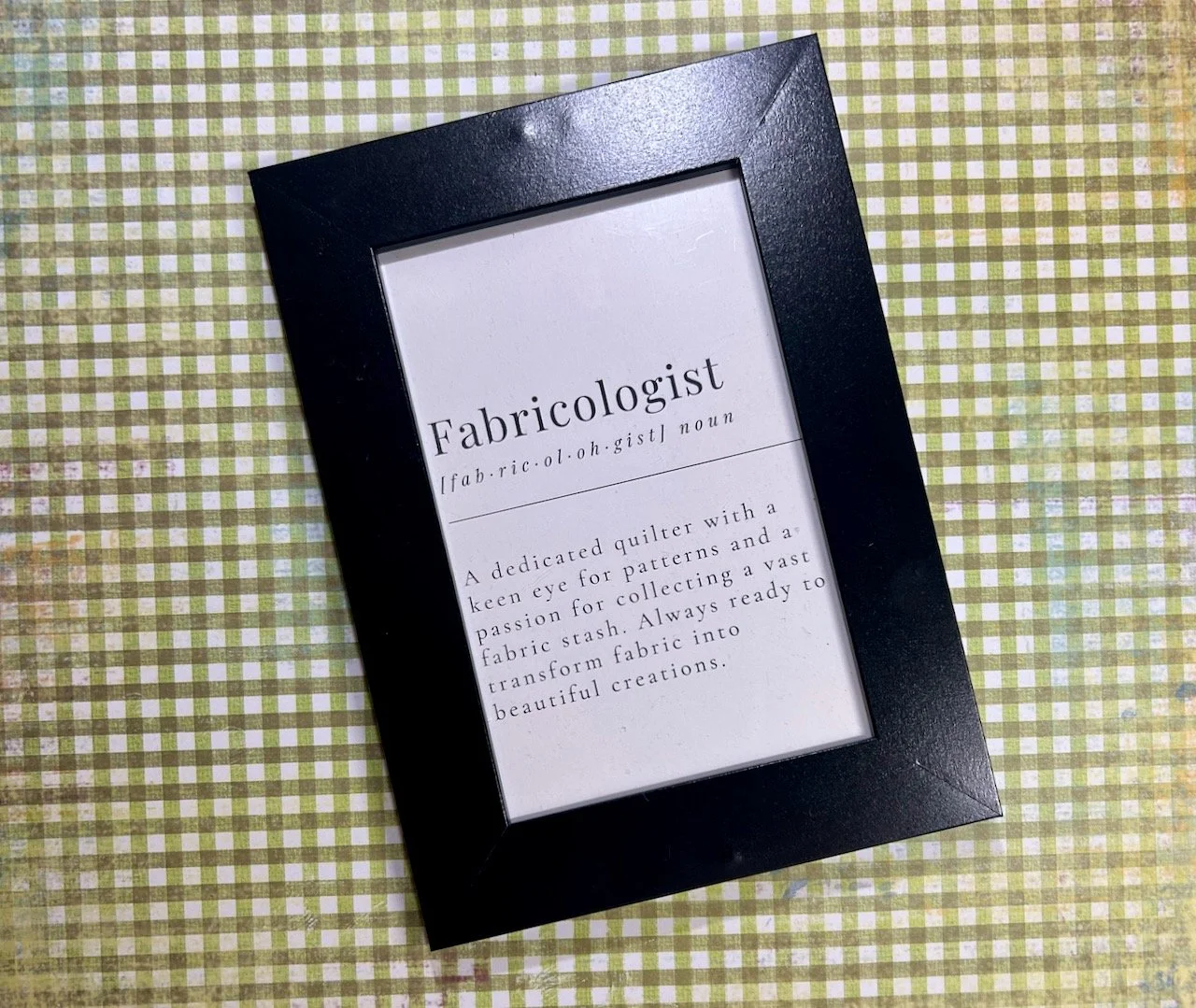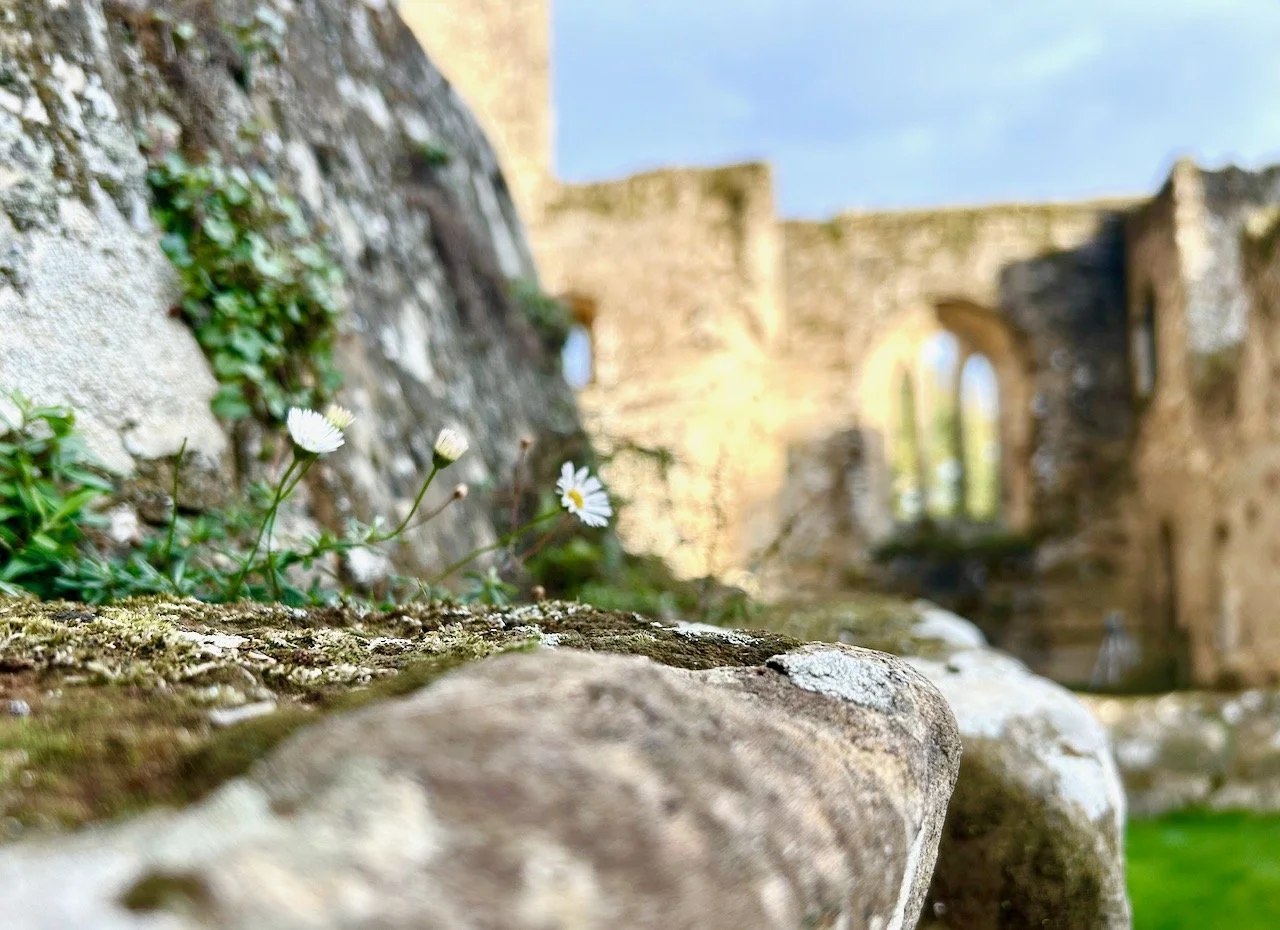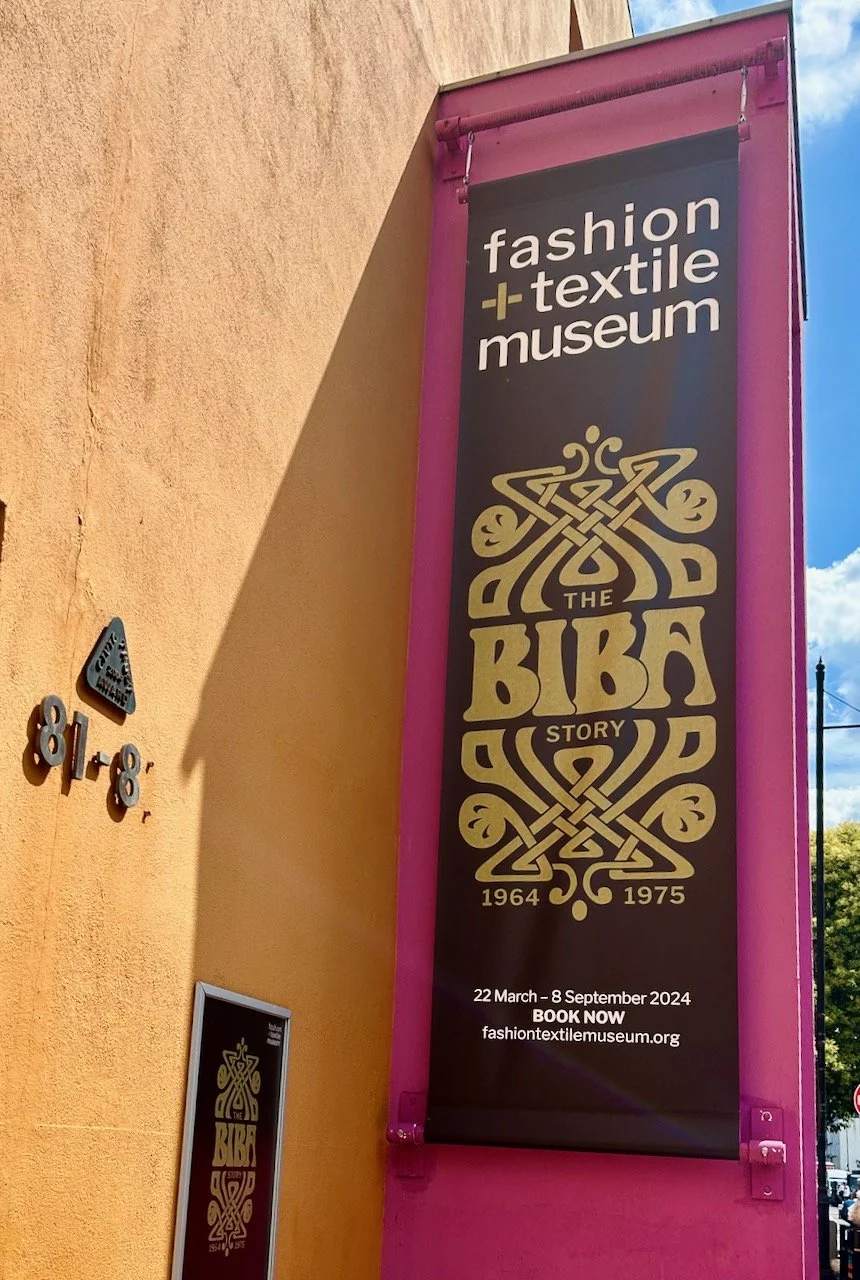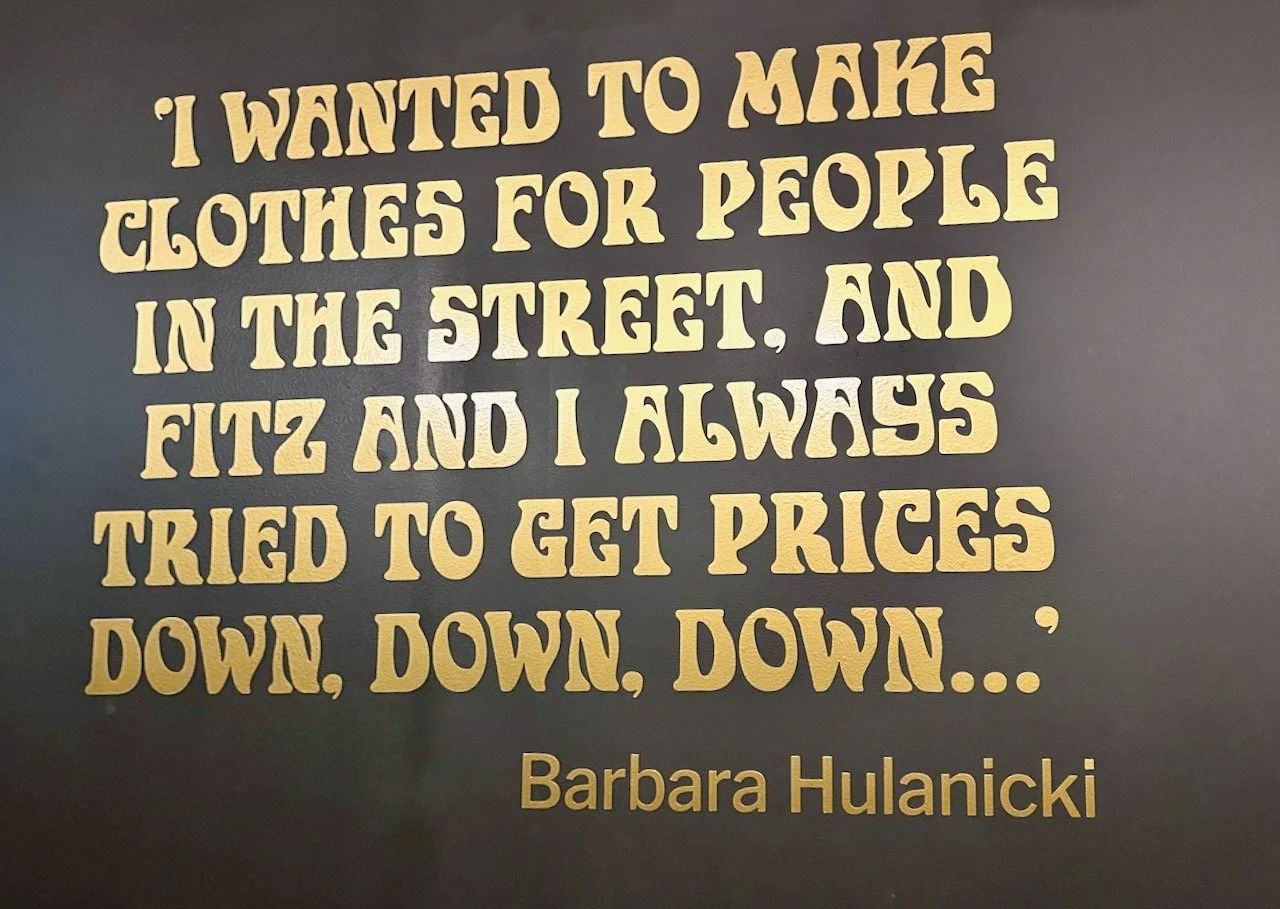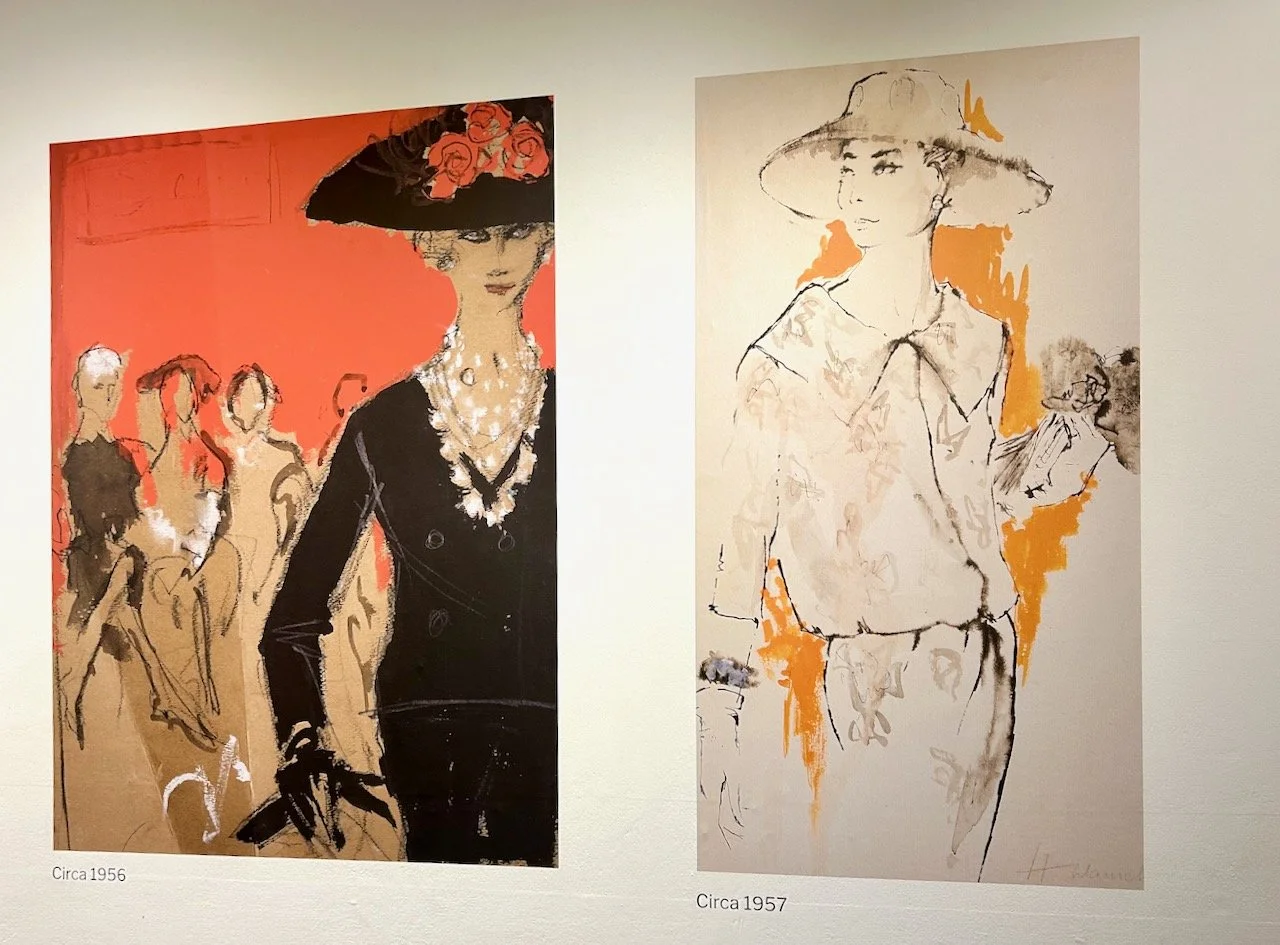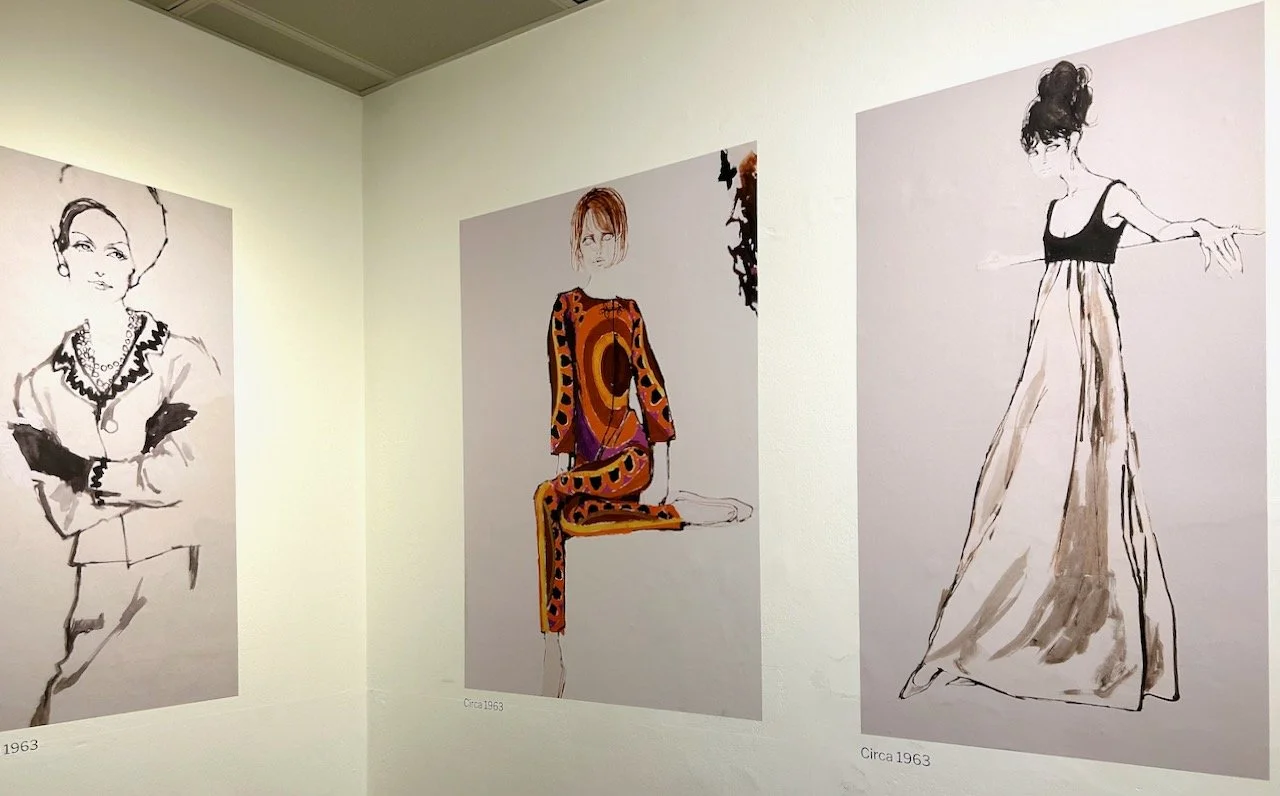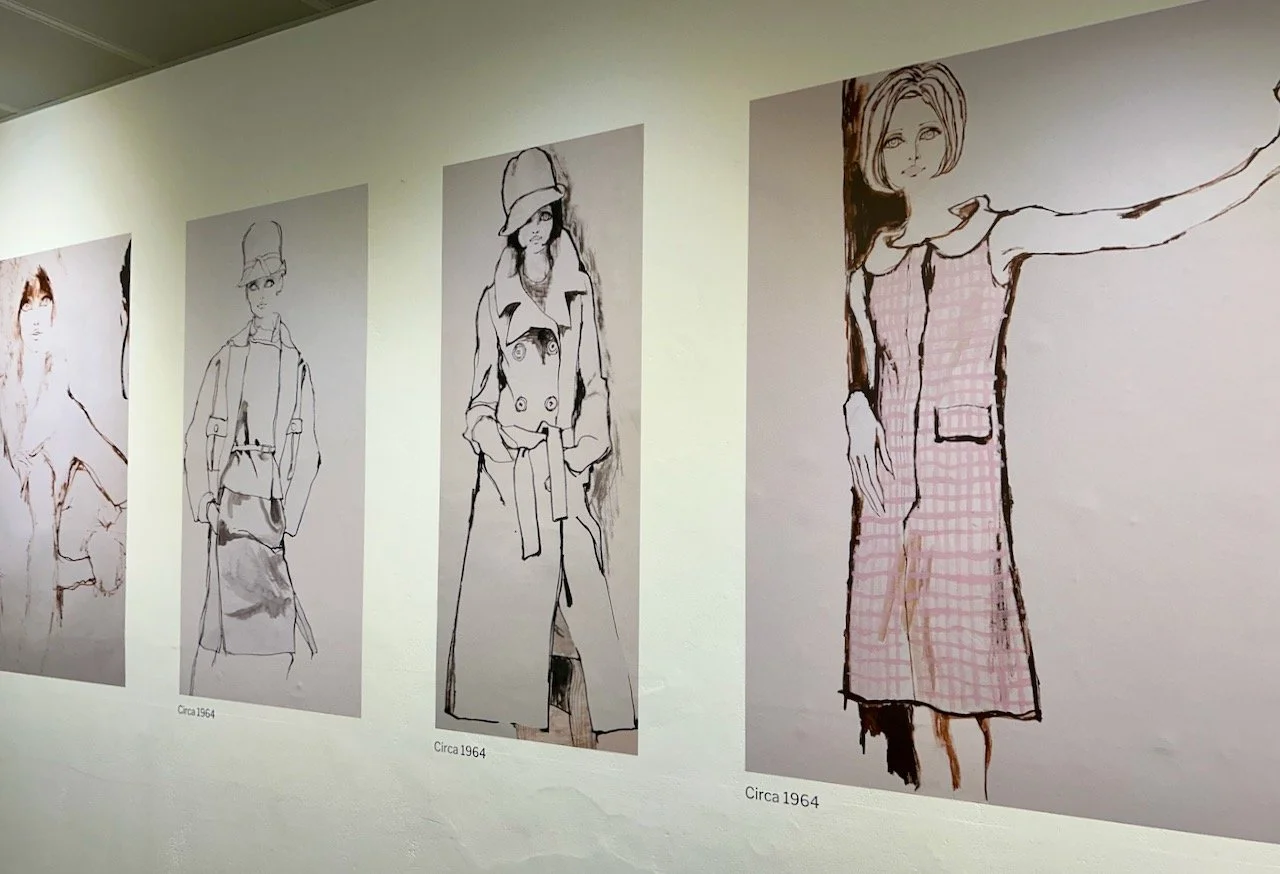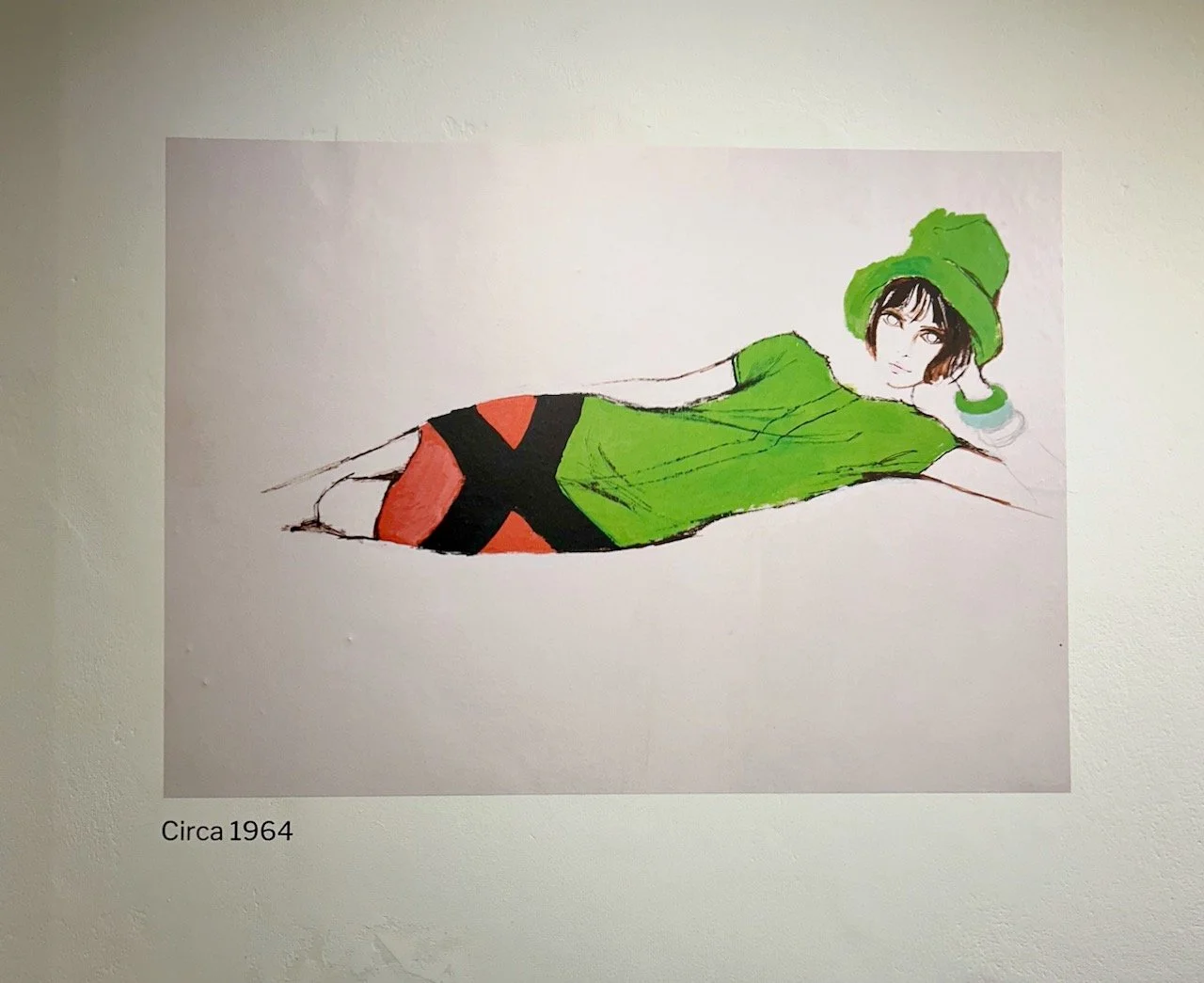It’s been a while since I shared my initial plans to create a space to craft, and while it’s worked out well there have been some additions and changes along the way. The pegboards have been excellent for storage in a space that otherwise wouldn’t have been used, and even though they’re in a cupboard it’s great that they keep things so organised.
But actually the biggest game changer has been the additional desk top - and space that provides - that we added earlier in the year. I don’t know why, but now I just seem to get so much more done and without moving piles or stuff, or projects as I like to call them! Maybe that’s why…
I’m still very much liking the plain white walls, though a couple more things have found their home hanging on the walls here - there’s the colour wheel plate which is already up, and I plan to add a picture which I brought back from my travels, or more precisely from my stopover in Singapore way back in 2000, underneath it.
I thought I was done picture wise.
But it turns out I’m not.
As soon as I saw these at my sewing group’s recent stash sale I knew that some would end up on the wall in my craft room. But how many? I guessed three would work, as I think things in odd numbers always look better. But which three? Eventually I narrowed it down and left with these three images from a vintage Vogue pattern catalogue, thought to date back to 1949/50, and I couldn’t be happier.
Each of them makes me smile for many reasons, and not just for the illustrations which in so many ways reminded me of those I shared from the Biba exhibition recently, but also for the memories of flicking through pattern catalogues in shops which have long gone; The Button Shop in South Norwood High Street and Allders in Croydon are just two that spring to mind.
1 The Jacket Dress
This was actually the last of the images I chose, and it was chosen to balance colour-wise alongside the two-piece dress further below, but that wasn’t the only reason. I’m not so good with jackets, and have few in my wardrobe, though I did fall in love and buy one last summer, and I’ve worn that precisely, once!
But as the text says ‘the jacket-dress is a staunch friend of the busy woman who is in a whirl of activities thoughout the day’ - maybe I just don’t have enough whirl to my activities, though of course with this I would!
2 The One-Piece Dress “Easy-To-Make”
Ah yes, the ballgown which is labelled as easy to make. Yes, I’m sure it is if you’re an expert sewer, and maybe that was the market when the catalogue was published. However I loved the drawings, and was quite taken with the pink version, and the tiny waist.
Looking at the sizing table though, and another indication of how things have changed. A size 14 with a 32 bust - today’s size 14 is usually a 38-40 bust.
3 Two-Piece Dress and Detachable Apron
Indeed, it’s what my wardrobe has been missing! Not. This was the one the first caught my eye. The style of the dress itself is hardly dated at all, but the idea of having an ‘apron overskirt’ is a whole other world away isn’t it. It’s a glorious part of history though, and I know all of the illustrations will look great on my wall.
The stash sale itself was a really friendly and sharing event. Everyone was keen to see everyone’s purchases and new treasures. These illustrations drew some admiration, and I got talking to two older ladies who shared that their mothers had ‘done the housework in their Sunday best’ as that’s what was done then, so the apron would have been a useful addition. One lady recalled how her mother used to have a bath in the afternoon, after the housework and before cooking dinner for when her husband arrived home.
I was speaking to my mum shortly after and recalled the stories above, mum retold a story about her nan always having her best underwear on when she went out, even if that was across the road to the shop, just in case she got run over. It gives a lot of credence to the old adage doesn’t it? Anyway, onto framing my pictures.
Framing them
My plan now (or well soon) is to get these custom-framed, as they’re not a standard size so it’s not as simple as just buying a frame, or as cheap! We’ve had some artwork framed since we moved here, but sadly the shop that did this (and did them very well) has now closed, though they recommended another shop in town, so I’ll have to check that one out.
My thoughts are to have a very simple, thin frame. Ideally I’d like a metal frame but I don’t think my budget will stretch to that (but I’m happy to be proven wrong!) so my second choice will be a metallic coloured frame - I’m nothing if not resourceful! But we’ll see. I’ve also worked out that with a narrow frame, all three can hang side by side which is my preference.
So it’s a watch this space, but in the meantime every time I see them I can’t help but smile and think this is the best £3 I’ve probably ever spent.
